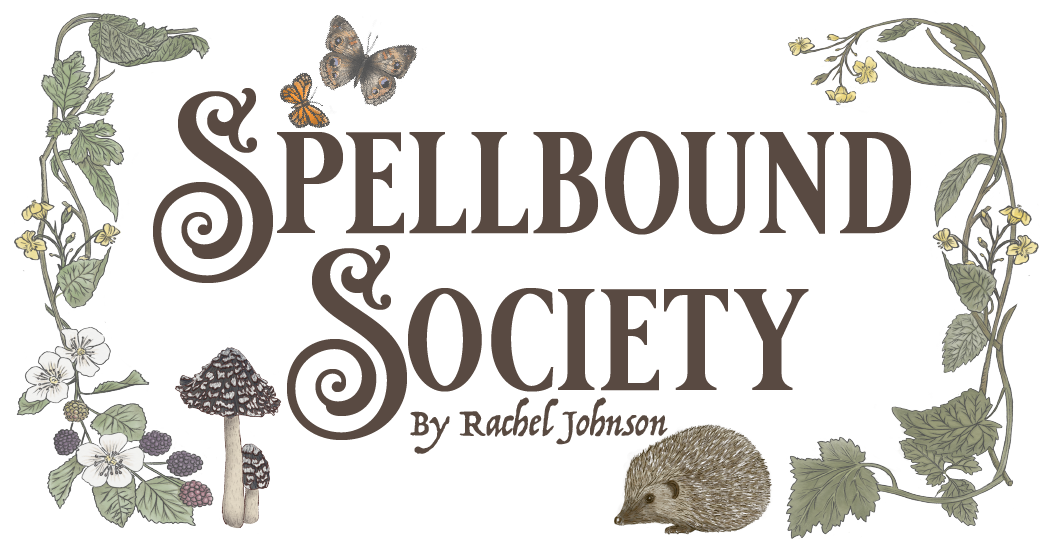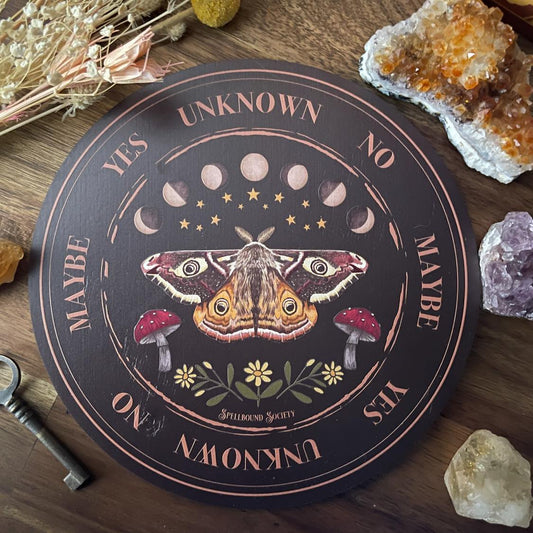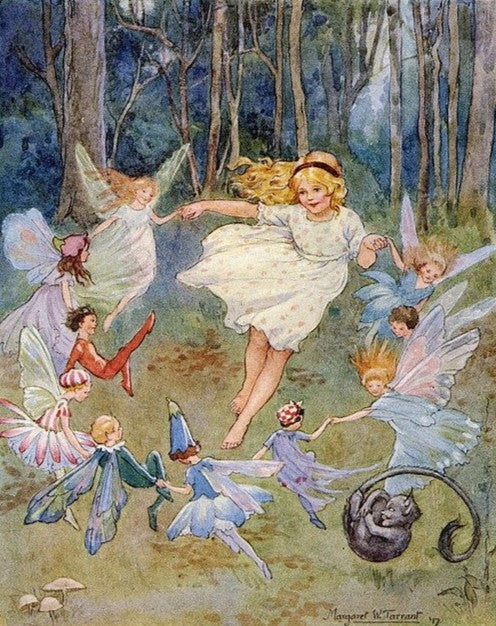
Mushrooms circles magic and the Fae
My favorite childhood stories always had an entry into a magical world. A tree, a torch, or a magical doorway. Mushroom circles carry warnings that if stepped into you may enter a fairy portal and never be able to leave. Yet it is also a place of magical possibilities, a way to enter a world of enchantment. A special place that holds endless dreams and possibilities.
I love the quote "Those who don't believe in magic will never find it" Roald Dahl
Therefore mushrooms appear in my artwork frequently.
When I pull a tarot or oracle card in the morning I like to place it in my mushroom card holder, it's a reminder to let my imagination wander as I look at the image on the card.
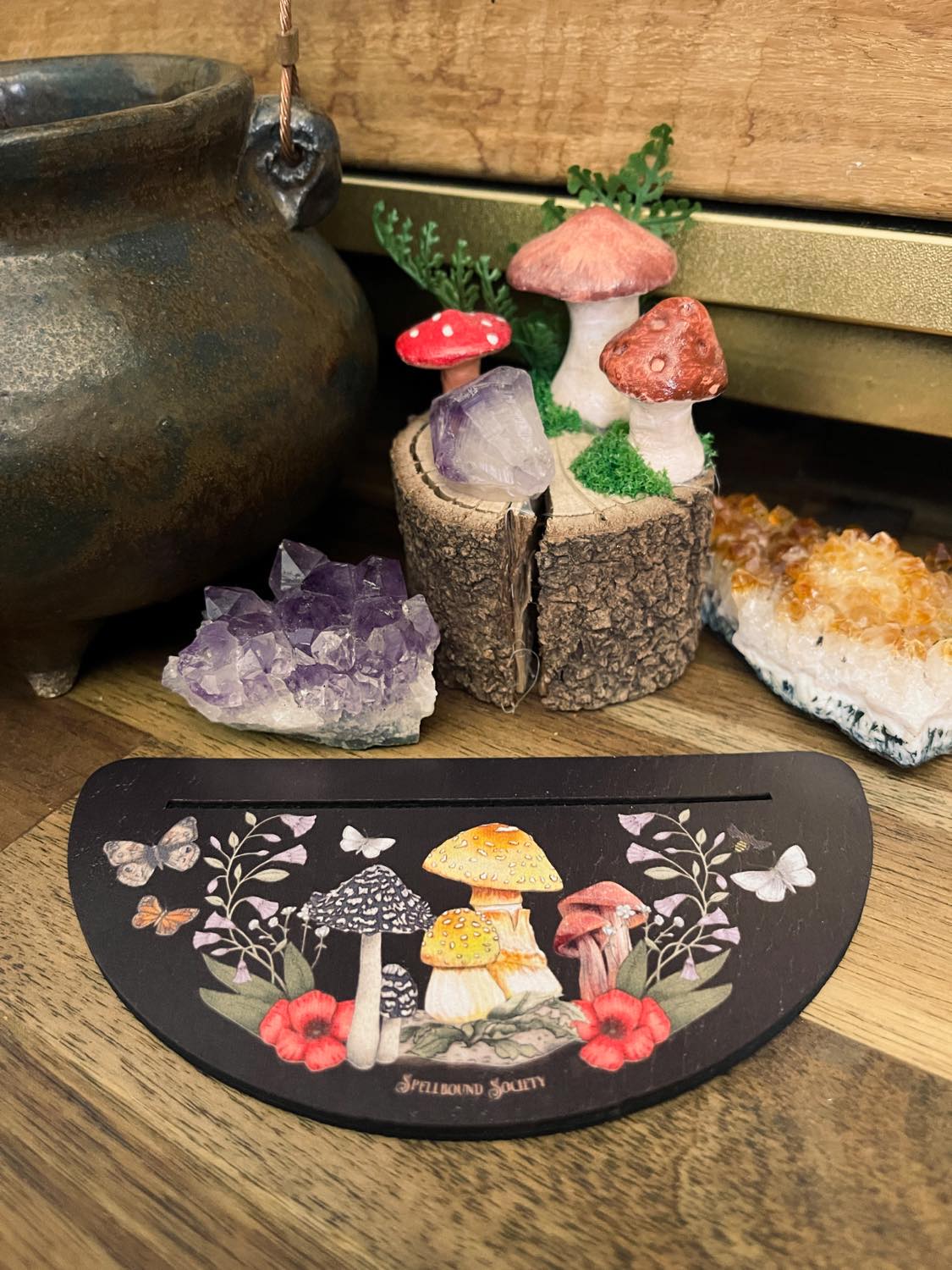
Fairy Rings in Celtic Lore
Deep within the emerald embrace of Celtic forests, folklore whispers of hidden pathways and mystical portals. Among these, the fairy ring holds a captivating allure. These circles of mushrooms, sprouting defiantly in perfect rings or eerie arcs, have sparked the imagination for centuries, blurring the lines between the natural world and the realm of the Fae.
In the windswept landscapes of Northern Europe, the UK, and Ireland, fairy rings weren't mere fungal curiosities. They were believed to be the footprints of the Fair Folk, whimsical and mischievous beings who danced under the cloak of twilight. Legend painted these rings as entrances to the Otherworld, a hidden dimension teeming with magic and wonder. To step inside was to risk being whisked away, never to return, or to return forever changed, speaking in riddles and possessed by otherworldly knowledge.
The very presence of a fairy ring imbued the surrounding forest with an otherworldly air. The grass within the circle might appear unusually lush or conversely, withered and lifeless. Eerie bioluminescent fungi, ghostly pale in the dim forest light, might illuminate the ring at night, further fueling the aura of enchantment.
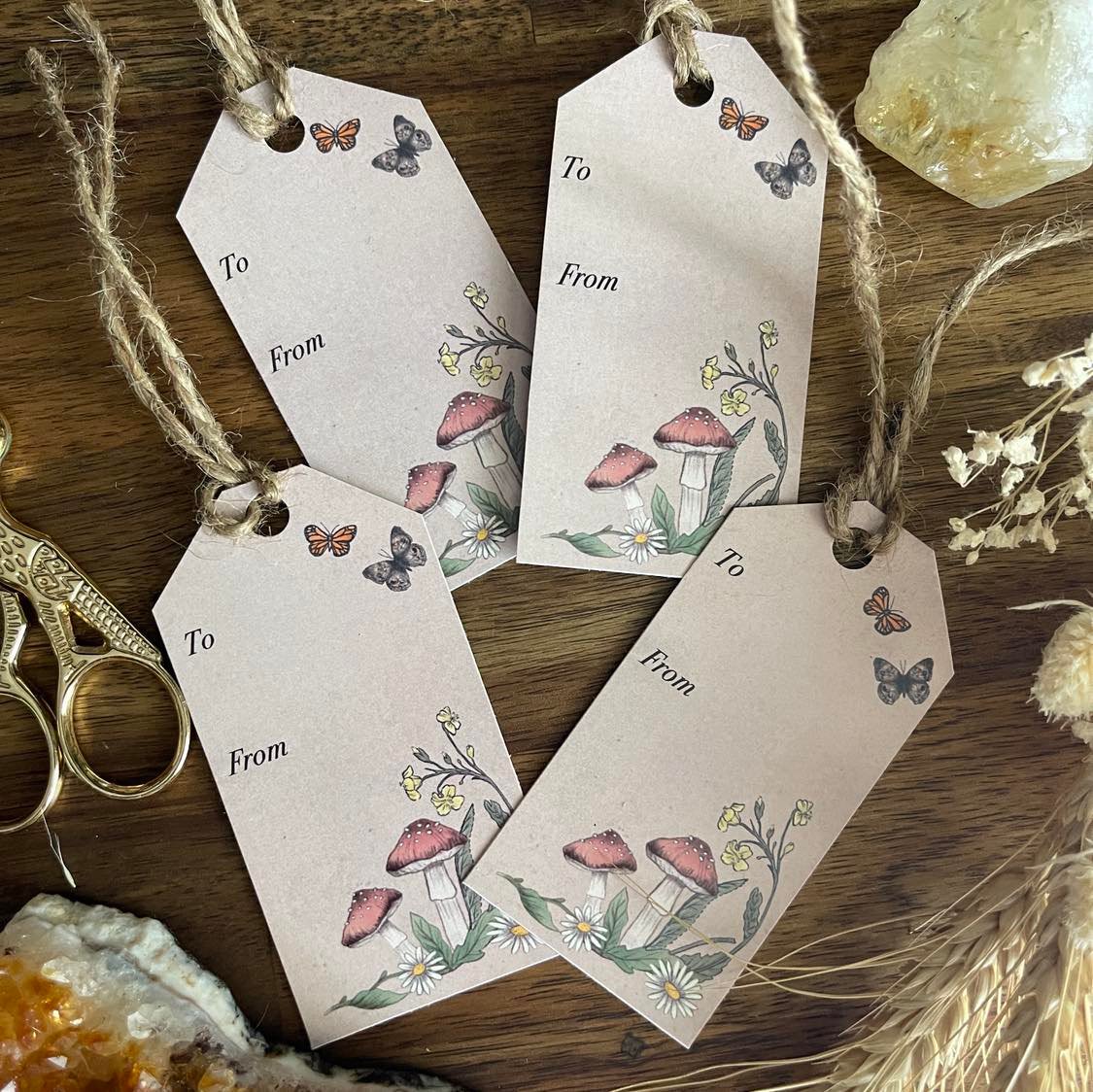
Celtic lore associated these rings with specific deities. In Irish folklore, the rings were said to be the playgrounds of the Daoine Sidhe, the "fairy people." In Scotland, they were connected to the Sìdhean, mounds believed to be gateways to the Otherworld. Stepping inside a fairy ring might lead you to a fantastical realm, a land of eternal youth and revelry, or a place of trickery and danger.
The tales surrounding fairy rings were not always lighthearted. In some regions, they were seen as ominous signs, portents of misfortune or even death. Crossing a fairy ring was said to invite bad luck or illness. To appease the fairies, offerings of milk, bread, or honey might be left at the ring's edge, a gesture of respect and appeasement.
Despite the potential dangers, fairy rings held a strange allure. They were places of transformation, where the veil between worlds thinned. Young maidens were said to be particularly susceptible to the Fae's charms. Stories abound of girls who vanished within the ring, returning days later, seemingly unchanged, yet forever marked by a touch of the Otherworld.
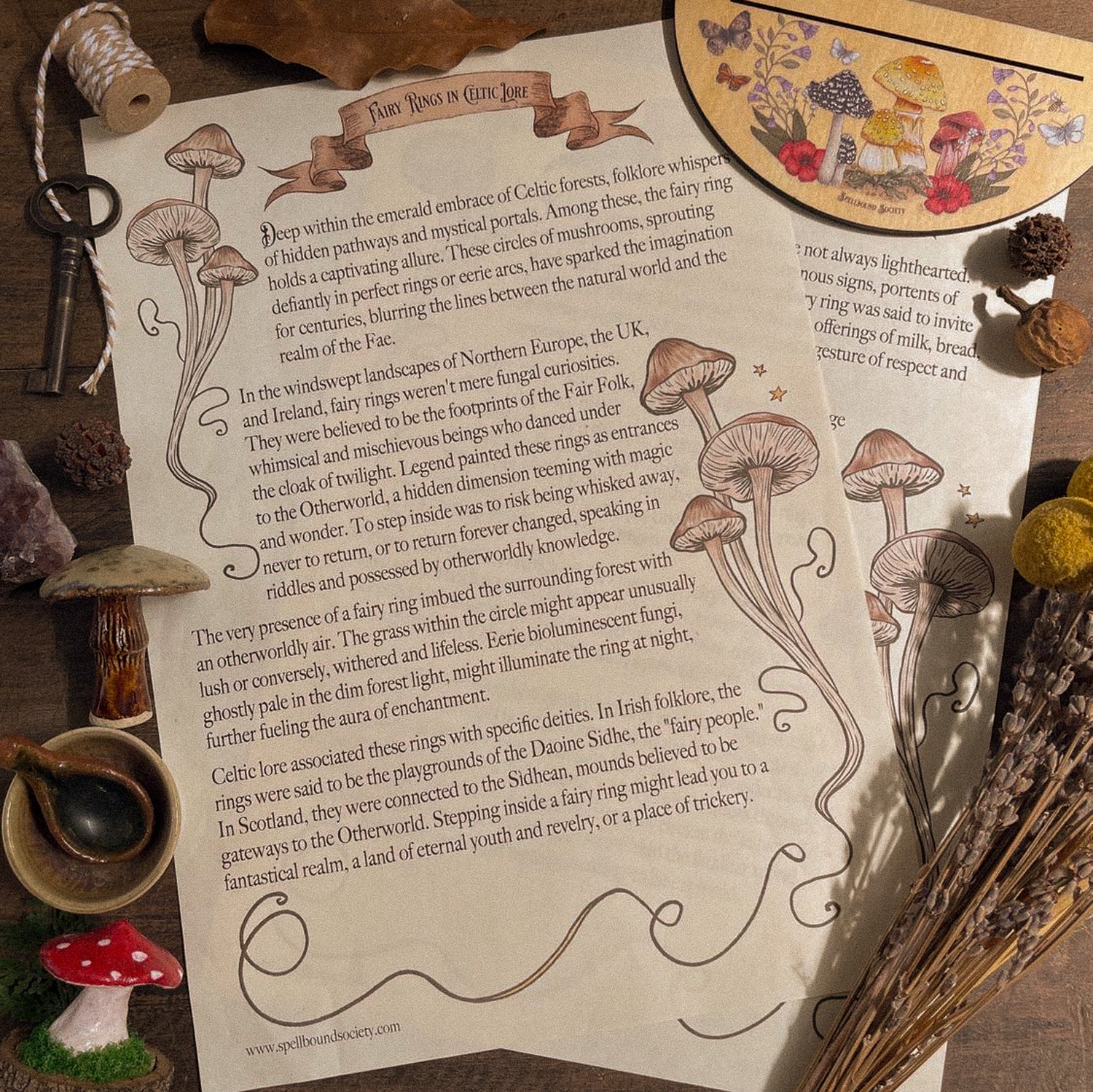
Bards and storytellers often used the imagery of fairy rings to weave tales of enchantment. In Welsh mythology, the rings were associated with Annwn, the Celtic underworld. These rings were seen as gateways for the souls of the dead, a passage between worlds.
The mystery surrounding fairy rings continues to this day. Science has demystified their formation, attributing them to the growth patterns of underground fungal networks. However, the magic and wonder remain. In the hushed stillness of a Celtic forest, where sunlight filters through ancient boughs and mushrooms sprout in perfect circles, the legacy of the fairy ring endures. It is a reminder that even within the familiar world, there exist pockets of mystery, waiting to be explored.
I created Free Grimoire Pages of this text for my Spellbound Society Newsletter members. Sign up to join it's free.
Customer Favorites
-
Woodland Green Snuggle Blanket
Regular price $77.00 USDRegular priceUnit price per -
Woodland Animal light divination reading cloth / altar cloth
Regular price $16.00 USDRegular priceUnit price per -
Witch's Cottage Wall Hanging
Regular price $20.00 USDRegular priceUnit price per -
Moth Pendulum Board
Regular price $16.00 USDRegular priceUnit price per
